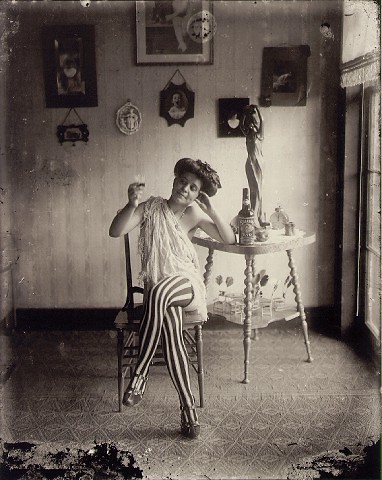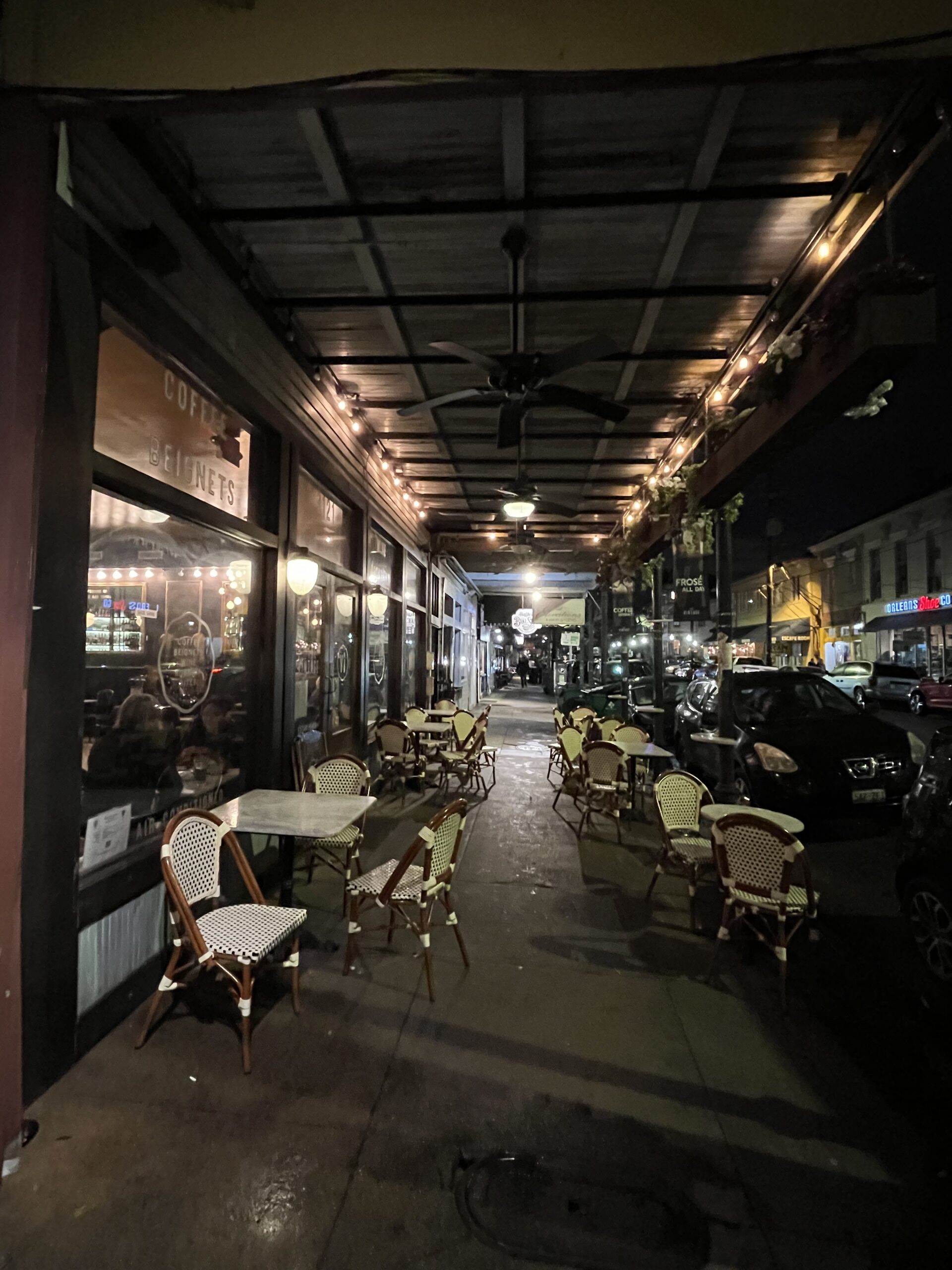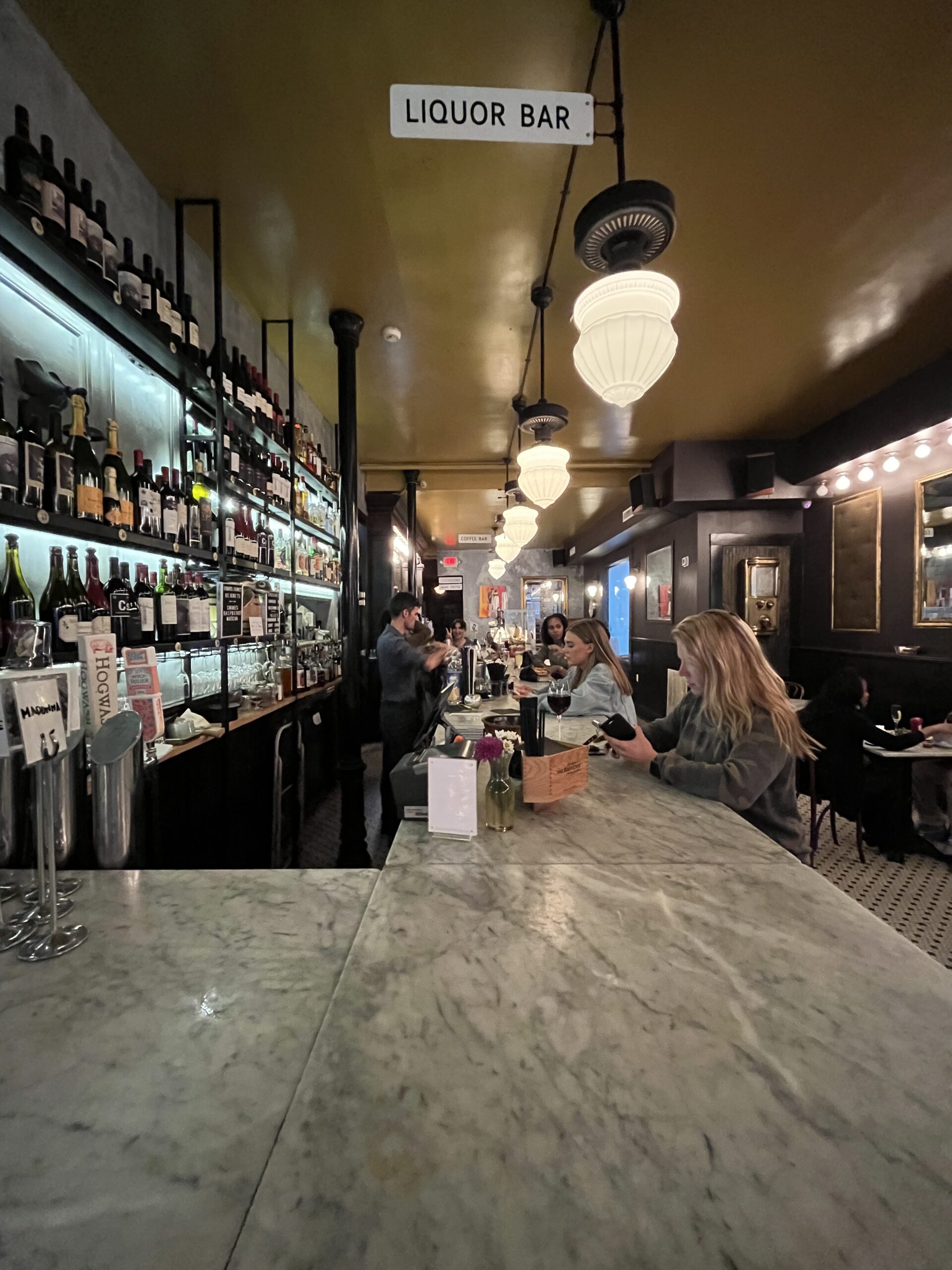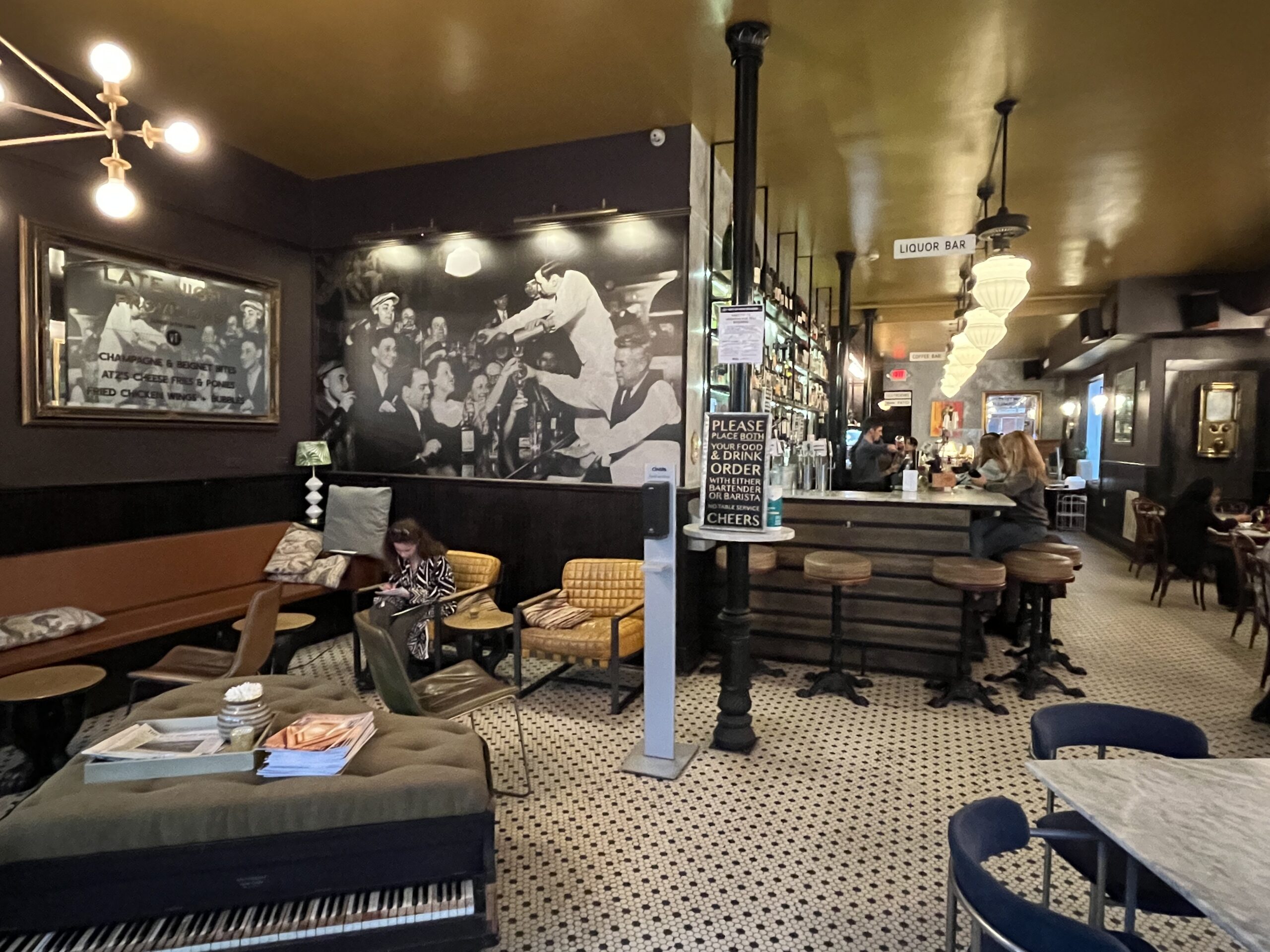Editor’s Note: May we Mayke a suggestion? No, our suggestion is not that we stop using cringeworthy puns, but it is to think ahead! We know what’s coming: the summer. The time when the air is heavy, the tourists have abandoned ship, and us locals are left to enjoy our city, heat and all. That’s where we come in! All the month of May we are going to prepare you to “Ban the Boredom” by giving you the best places, the best restaurants, and the best event, but since we never do anything “normal” at ViaNolaVie, we are basing these suggestions around various psychological states! If you’re a total introvert, we’ve got a spot for you! If you have a disability, we’ve got the places that actually don’t discriminate and let you get down the way you want to get down. We’ve got something for everyone because New Orleans is the city for everyone! Up first, if you miss the days and raucous of Storyville (because, you know, we weren’t alive then), we’ve got your fill for you!

Storyville Prositute, 1917
Photo By: Ernest Bellocq
The slogan of New Orleans: Laissez Les Bon Temps Rouler, or Let the Good Times Roll, has long described the city’s ambiance, but at one time this revelry was more or less contained to one area of the city.
Stepping off the trolley in New Orleans, the scent of crawfish and beignets overcame you and the sound of trumpets and trombones pulled you through the station and out onto the street. The majority of the people crossed the section of streets that connected Canal and Basin Street. A good woman was very quickly hurried in another direction from the area in the bounds of Iberville, Basin Street, St. Louis, and N. Robertson streets, this area was known as Storyville, or The District and was a place of debauchery for the men of New Orleans where prostitution was legal. The District was located deep in the heart of New Orleans within the French Quarter off of Canal, and this area was steeped in character with jazz music coming from every window and drunken men stumbling out of saloons and speakeasies.
Basin Street had “palaces” where people could place bets and saloons where the male patrons could drink gin rickeys or old fashioneds until the sun rose in the morning. These palaces offered the highest quality women for the wealthier patrons of Storyville. In the other streets of this area, things were less grand with “cribs” that women worked out of for much less money. No matter where these women worked, however, jazz could always be heard. With it being illegal for prostitutes to sell their wares on the streets, there were men in high-class suits and soldiers stopping into the saloons where prostitutes were allowed in. The mothers and daughters in New Orleans in their luxurious bustle dresses and fancy hats were kept indoors and off of the streets of Storyville. With its many speakeasies, dance halls, restaurants and cabarets, Storyville remained a popular entertainment area to all walks of life for about 20 years.
Now, let’s move 100+ years into the future. At the corner of Magazine lies a restaurant that is just a few blocks from the streetcar stop of 8th and St. Charles. The Vintage is a place with incredible food like beignet bites and truffle fries and drinks like French 75s and Irish Coffees and floors and décor that transport you back to a time when photographs were still black and white. With traditional New
Orleans Shotgun style architecture and outdoor wicker chairs for nice days, The Vintage gives off a classic New Orleans energy that is enhanced by hanging plants and a crowd that’s always ready for a conversation or a party. Even though Storyville and The Vintage exist about 100 years apart, they both harbor the feel of a speakeasy.
The walls of The Vintage are lined with mirrors etched with the menu in gold writing, tying in with the gold plating on the light fixtures and reflecting the warm light put off by them. The black and white tiles of the floor bring out the black and white photograph on one of the few mirrorless walls. This photograph illustrates a scene at a bar where drinks are being poured and the people are dressed in dapper suits and early 1900s dresses. There are a myriad of seating options –from small tables with chairs or a couch to lounge on, to an outdoor seating area filled with wicker chairs and tables and covered by an awning. For some, there’s even an old fashioned shoe shining chair set up in the restaurant. The bar is reminiscent of a speakeasy, with leather covered bar stools and bottles lining the back shelves because of the multitude of drinks that are offered including: margaritas, Moscow mules, and negronis. the insides of the Storyville palaces and speakeasies were ornately designed.

Photo of the outside of The Vintage. (Photo by Vivienne Spiess)
Mahogany Hall, originally called the Hall of Mirrors, was the most lavishly decorated of these palaces. It was a marble building with a stained glass window
above the entrance door. The rooms were filled with chandeliers, Rococo style furniture, exotic plants, and everything was gold lined. These palaces and speakeasies were places that exuded wealth and class despite being places of ill-repute. Just as people from all walks of life went to the saloons and bars of StoryVille, the same is true for The Vintage. On a set of couches surrounding a cushion covered antique piano, college students dressed chicly in colorful pants and button up shirts sat discussing their spring break plans. Across the restaurant, sat a man wearing a sweatshirt and joggers sitting alone working at his laptop. At the bar a nicely dressed real estate agent and their client sat, having cocktails and making deals.

The bar at The Vintage.
With such a wide variety of personalities, The Vintage becomes a place where you can put on a mask and become anyone. A big reason behind this is that humans present themselves with a façade based on the people around them. “We become the person we see mirrored in the eyes of others” (Doigner, 67), at The Vintage this appears to be a more sophisticated person. When you are in The Vintage you are surrounded by the environment that has been created and mirror that unconsciously while you are there. Everyone seems put together either in nicer brands like Tommy Hilfiger and Calvin Klein reflecting the posh décor of the room. This was also reflected in the drinks ordered, everyone was drinking fancy drinks, like a woman sitting alone drinking champagne that was the same gold as the gold accents in the room. They reflect “the setting-furnishings, décor, or background items”(Stone, 105) in The Vintage. This also came through through the servers and the bartenders. The servers reflected the more casual aspects of The Vintage in clothes like black slacks and simple graphic t-shirts, while the bartenders seemed to dress slightly nicer than the servers in more dressy pants and more extravagant shirts.

Floor, piano, seating, and black and white photo inside of The Vintage.
This same effect happened in Storyville. In the nicer areas everyone was dressed to the nines in their best dresses and suits, while in the areas where the cribs were, people wore simple frocks and suspenders and ill-fitting jackets and slacks. Those able to pay for the higher end locations and women stayed in the big palaces, but many different kinds of people went to the speakeasies. No matter where in life a person is from, they have similar desires that they want filled.
The menu is the first thing that people look at when sitting down at The Vintage because everything a person could desire from a restaurant is located inside. Any drink you can think of from wines to cocktails and food like beignet bites and truffle fries are all in one place. This is very similar to The Blue Books from Storyville. Blue Books contained all of the locations of and descriptions of sex workers. They were identified by race and religion and also included advertisements for other vices that consumers would have like cigars and distillers. Much like how you can order food and drinks from The Vintage menu and get your desires fulfilled, you could choose a woman from the Blue Book to have your sexual desires achieved.
Storyville was shut down in 1917 and never regained its previous vivacity, but it continues to live on in places like The Vintage. By embracing all walks of life and allowing people to let loose without judgment, The Vintage keeps the speakeasy alive, fulfilling the desires of everyone who walks through its doors.
Stone, Gregory P. American Journal of Sociology 63, no. 1 (1957): 105–105. http://www.jstor.org/stable/2772844.
Many Masks, Many Selves – JSTOR. https://www.jstor.org/stable/pdf/20028073.pdf.
 NOLAbeings
Multimedia artist Claire Bangser created NOLAbeings as a portrait-based story project that marries...
NOLAbeings
Multimedia artist Claire Bangser created NOLAbeings as a portrait-based story project that marries...
 Data corner: Adobe Suite (create a PDF, social media graphic, presentation, edit a photo and video
Data corner is where you go to work with analytics and top tech skills. It takes on everything from PERL and SQL to Canva and Sprout Social.
Data corner: Adobe Suite (create a PDF, social media graphic, presentation, edit a photo and video
Data corner is where you go to work with analytics and top tech skills. It takes on everything from PERL and SQL to Canva and Sprout Social.
